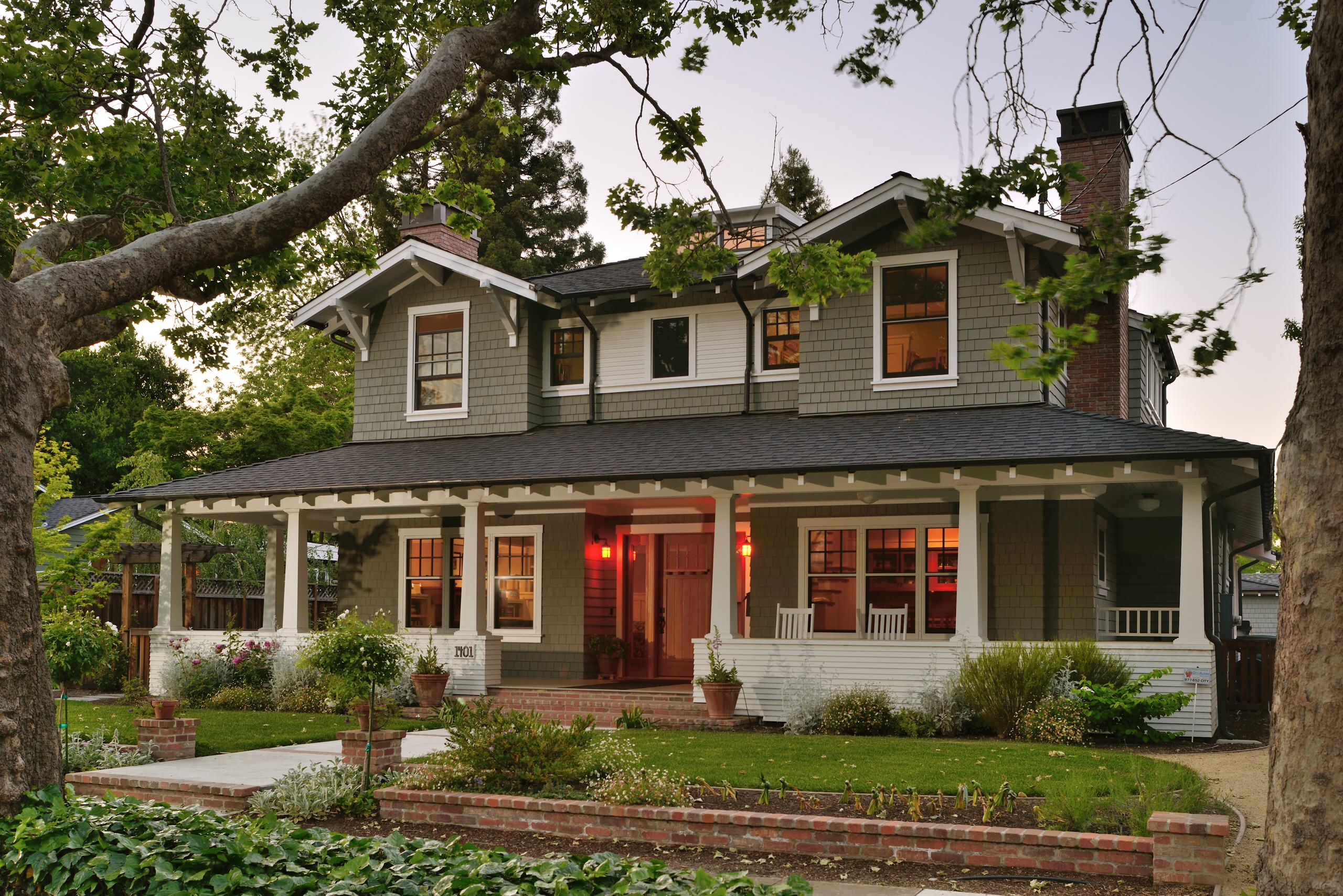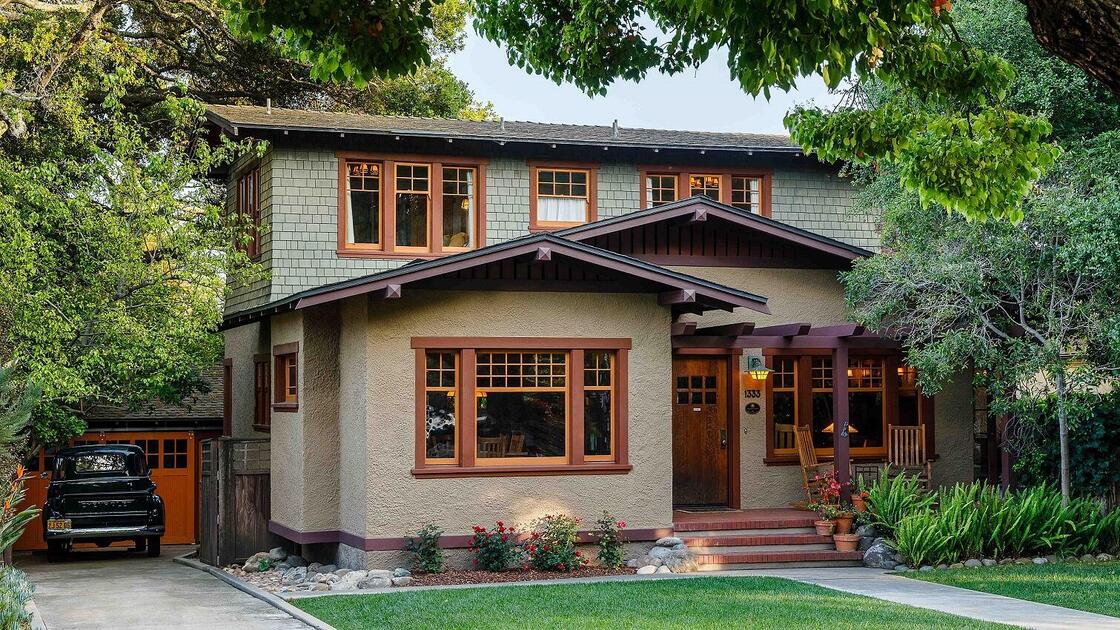The Role of Arts & & Crafts Architects in Elevating Architectural Solutions in Residential Style
Arts and Crafts architects substantially affect property layout via their commitment to workmanship and sustainability. They prioritize handmade information and all-natural products, which improve both looks and area identity. By including customers in the design process, these architects create unique space that resonate with personal preferences. This technique elevates concerns regarding the future trajectory of property architecture and its prospective influence on community characteristics. craftsman style house. What exists ahead for this ageless style viewpoint?
:strip_icc()/home-exterior-fence-a9b9e28b-b49437cd70be476facd6eec8e0d60541.jpg)
The Principles of Arts and Crafts Architecture
The significance of Arts and Crafts architecture depends on its commitment to craftsmanship and simplicity. This architectural motion arised in the late 19th century as a reaction to industrialization, highlighting the worth of handmade information and all-natural products. The concepts of Arts and Crafts architecture prioritize capability and harmony with the setting. Frameworks commonly feature low-pitched roofing systems, broad eaves, and subjected rafters, promoting a feeling of unity with nature.
Artisans played a substantial duty in this style, typically integrating decorative components like tarnished glass, floor tiles, and woodwork, which mirror regional workmanship. The color scheme often tends to be earthy and subdued, allowing structures to blend seamlessly into their environments. In addition, the layout motivates open floor strategies and common rooms, cultivating a sense of togetherness. Overall, the principles of Arts and Crafts architecture commemorate the elegance of simpleness and the relevance of human link to both nature and neighborhood.

Lasting Practices in Residential Layout
While the need for ecologically accountable living remains to grow, lasting methods in property design have obtained substantial traction among architects and homeowners alike. Architects are significantly integrating energy-efficient modern technologies and sustainable products into their designs, aiming to lower carbon impacts and improve energy preservation. Methods such as easy solar layout, eco-friendly roofs, and rain harvesting systems are ending up being basic parts of contemporary residential architecture.
The option of locally sourced products decreases transportation discharges and supports local economies. Emphasis on all-natural light and ventilation not just enhances indoor air high quality yet also decreases dependence on artificial illumination and environment control systems. These lasting techniques reflect a commitment to maintaining the atmosphere while providing house owners with comfy, effective living spaces. As awareness of environmental problems expands, the assimilation of sustainability in residential design is positioned to become a defining characteristic of modern architecture, led by the concepts developed by Arts and Crafts architects.
Customization and Personalization in Home Design
Personalization and personalization in home style have become essential patterns in action to the growing need for one-of-a-kind living settings that mirror specific preferences and way of livings. Home owners significantly seek to tailor spaces that resonate with their personal identifications, bring about an extra purposeful connection with their space. craftsman style house. This movement encourages architects to involve customers in the layout procedure, promoting collaboration that guarantees the last end result symbolizes the house owner's vision
Elements such as bespoke layouts, custom products, and customized finishes allow for a varied variety of expressions in residential layout. Arts and Crafts architects play an essential function in this evolution, stressing craftsmanship and quality. Their concentrate on integrating artistic aspects with performance my explanation guarantees that each home is not just visually pleasing but additionally distinctly fit to the occupants' requirements. As a result, this emphasis on customization enhances the overall household experience, developing areas that are both personal and enduring.

The Effect of Arts and Crafts Architects on Community Looks
As neighborhoods evolve, the impact of Arts and Crafts architects considerably shapes their visual landscape. By highlighting handmade details, all-natural materials, and traditional building and construction methods, these architects develop homes that resonate with their environments. Their styles usually incorporate neighborhood plants, textures, and colors, promoting a sense of consistency between developed atmospheres and nature.
Furthermore, the Arts and Crafts motion promotes community identification with architectural connection. By motivating property owners to take on similar style concepts, neighborhoods create a cohesive character that boosts visual appeal. This building harmony not only enhances the aesthetic experience yet also imparts a feeling of satisfaction among citizens.
Furthermore, the concentrate on sustainability and workmanship in Arts and Crafts architecture straightens with modern values, making these styles pertinent in modern settings. Eventually, Arts and Crafts architects contribute significantly to the general elegance and social integrity of communities, leaving an enduring effect on their visual legacy.

Future Patterns in Arts and Crafts Architecture
With a boosting focus on sustainability and customization, future patterns in Arts and Crafts architecture are positioned to mix traditional craftsmanship with modern innovation - craftsman style house. Architects are most likely to focus on green products, making use of recovered wood and natural rock to improve the sustainability of property styles. The combination of wise home innovation will become typical, permitting customized living experiences without compromising visual stability
Furthermore, the revival of artisanal strategies will foster a restored recognition for handcrafted components, such as bespoke cabinets and customized floor tile job. Future styles may also mirror an emphasis on community-oriented areas, encouraging communication and connection among residents. Outside living areas will obtain importance, flawlessly integrating nature right dig this into the home atmosphere. As Arts and Crafts architecture evolves, it will continue to recognize its origins while adapting to contemporary needs, find out producing harmonious areas that mirror individual values and way of livings.
Frequently Asked Concerns
What Motivated the Arts and Crafts Activity in Architecture?
The Arts and Crafts activity in architecture was motivated by a reaction versus industrialization, stressing handcrafted quality, natural products, and a go back to traditional craftsmanship, intending to produce unified, functional areas that commemorated virtuosity and individuality.
Exactly how Do Arts and Crafts Architects Collaborate With Customers?
Arts and crafts architects team up with customers through open dialogue, prioritizing personal requirements and looks. They stress craftsmanship and sustainability, promoting a collaboration that incorporates the customer's vision with the architect's expertise in layout and materials.
What Materials Are Typically Utilized in Arts and Crafts Houses?
Typical materials in Arts and Crafts homes consist of natural timber, rock, and block, highlighting craftsmanship and natural aesthetic appeals. These elements produce a warm, inviting atmosphere, mirroring the movement's dedication to top quality and simpleness in style.
Exactly how Do Arts and Crafts Styles Improve Indoor Living Areas?
Arts and Crafts designs enhance indoor living spaces by advertising all-natural light, open flooring plans, and handcrafted details. These elements cultivate a cozy, welcoming environment, encouraging a link in between citizens and their environments through thoughtful, practical appearances.
What Are Some Famous Instances of Arts and Crafts Architecture?
Famous examples of Arts and Crafts architecture include the Wager House, Greene and Greene's masterpiece in The golden state, and the Robie Home by Frank Lloyd Wright. These structures display handcrafted information and harmony with nature, specifying the motion's essence.